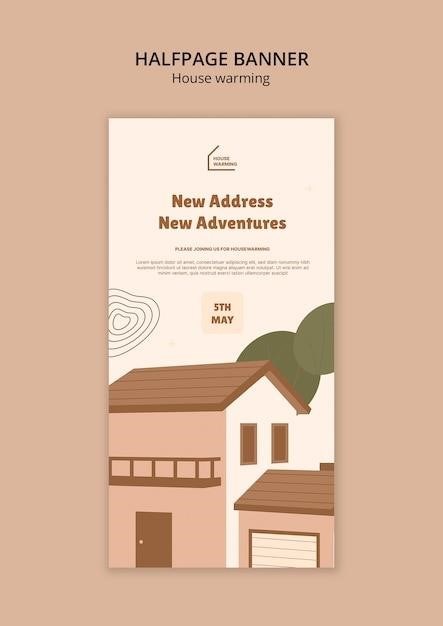Enrique’s Journey⁚ A True Story of Courage and Resilience
Enrique’s Journey is a poignant and powerful true story that follows the incredible journey of a young Honduran boy named Enrique, who embarks on a perilous odyssey to find his mother in the United States. It’s a tale that captures the heart and resonates with the reader, highlighting the profound bond between a mother and child, the enduring spirit of hope, and the harsh realities of immigration.
The Boy’s Unforgettable Odyssey
Enrique’s Journey is a testament to the extraordinary lengths a child will go to in search of love and family. Enrique, a young Honduran boy, faces unimaginable hardship and peril as he embarks on a treacherous journey across Mexico, determined to reunite with his mother, who had left their impoverished family to seek a better life in the United States. His odyssey, filled with danger, desperation, and moments of profound human connection, is a stark reminder of the realities faced by countless children who are forced to flee their homes in search of a brighter future.
Enrique’s journey is a poignant exploration of resilience, courage, and the enduring power of love. He faces the harsh realities of poverty, displacement, and the relentless pursuit of a distant dream. His story unfolds against a backdrop of poverty, violence, and the constant threat of danger. Yet, amidst the challenges, Enrique’s journey reveals the extraordinary strength and determination of a child who refuses to give up hope.
Enrique’s journey is not merely a physical one; it is a testament to the unwavering strength of human spirit. He confronts his fears, embraces his courage, and finds solace in the kindness of strangers. His story serves as a poignant reminder of the human cost of immigration and the enduring power of hope in the face of adversity.
A Journey of Thousands
Enrique’s journey is not an isolated incident. It is a reflection of a much larger reality—the desperate plight of countless children who are forced to migrate in search of their families and a better life. Enrique’s story is a powerful reminder that the journey he undertakes is shared by thousands of children each year, all seeking the same elusive dream⁚ a chance at a brighter future. Their journeys are often marked by hardship, danger, and the constant threat of exploitation.

Enrique’s journey is a testament to the enduring human spirit, the unwavering hope that drives individuals to overcome unimaginable obstacles in pursuit of a better life. His story is a reminder that the challenges faced by undocumented immigrants are not merely abstract concepts; they are the lived experiences of countless individuals who are driven by a profound yearning for family, security, and a chance at a brighter future. Enrique’s journey serves as a poignant reminder that the human cost of immigration is a reality that cannot be ignored.
Enrique’s journey is a reminder that the challenges faced by undocumented immigrants are not merely abstract concepts, but rather the lived experiences of countless individuals who are driven by a profound yearning for family, security, and a chance at a brighter future. His story serves as a poignant reminder that the human cost of immigration is a reality that cannot be ignored.
The Power of Love and Family
At the heart of Enrique’s journey lies an unwavering love for his mother. Despite the years of separation, Enrique’s determination to reunite with her never wavers. His journey is not merely a physical one; it is a testament to the enduring power of love and family, a powerful force that can overcome even the most formidable obstacles. Enrique’s story underscores the profound impact of family bonds, showcasing the lengths to which individuals will go to protect and reunite with their loved ones.
Despite the hardships he faces, Enrique’s love for his mother remains unwavering. His journey is not merely a physical one; it is a testament to the enduring power of love and family, a powerful force that can overcome even the most formidable obstacles. Enrique’s story underscores the profound impact of family bonds, showcasing the lengths to which individuals will go to protect and reunite with their loved ones. His determination to reach his mother serves as a powerful reminder of the importance of family and the sacrifices individuals are willing to make for those they love.
Enrique’s journey is a poignant reminder that the bonds of family can transcend geographical boundaries and societal barriers. It is a story that resonates with the universal human yearning for connection, love, and belonging. His story is a testament to the resilience of the human spirit and the power of love to sustain hope even in the face of adversity.
The Challenges of Immigration
Enrique’s journey throws light on the harsh realities faced by undocumented immigrants, highlighting the perils and uncertainties they navigate in pursuit of a better life. The book vividly portrays the dangers lurking along the route, from treacherous train journeys and encounters with ruthless gangs to the ever-present threat of deportation. Enrique’s resilience in the face of these challenges underscores the immense fortitude required to navigate the complexities of immigration.
The book’s depiction of the treacherous journey Enrique undertakes exposes the inherent dangers faced by countless undocumented migrants. The constant threat of violence, exploitation, and deportation looms large, casting a shadow over their quest for a better future. Enrique’s journey serves as a stark reminder of the human cost of immigration policies, highlighting the vulnerabilities and risks faced by those seeking a new life in a foreign land.
Enrique’s experiences shed light on the systemic challenges faced by undocumented immigrants, from the lack of legal pathways to the constant fear of apprehension. The book underscores the human cost of immigration policies, emphasizing the need for humane and compassionate approaches to address the complex realities of migration. Enrique’s journey is a powerful testament to the enduring human spirit, illustrating the lengths to which individuals will go to escape poverty and create a better life for themselves and their families.
The American Dream and its Cost
Enrique’s journey is a poignant reminder of the allure and the cost of the American Dream. The pursuit of a better life, a life free from poverty and hardship, is a powerful motivator for countless individuals who risk everything to reach the United States. But the book also underscores the harsh realities of this pursuit, exposing the systemic inequalities and challenges faced by undocumented immigrants who often bear the brunt of societal prejudice and discriminatory policies.
Enrique’s journey is a testament to the enduring human spirit, the unyielding determination to build a better future. But it also serves as a stark reminder of the sacrifices and hardships endured by those who seek a life beyond their circumstances. The book’s depiction of Enrique’s struggles and the unwavering love he holds for his mother highlights the human cost of the American Dream, the price paid by families torn apart by the realities of immigration.
Enrique’s journey is a powerful reflection of the complex and multifaceted nature of the American Dream. It is a story of hope and resilience, of love and determination, but also a poignant reminder of the systemic challenges and social injustices that continue to plague undocumented immigrants. The book compels readers to confront the realities of immigration and the human cost of pursuing a better life, urging them to consider the complexities and contradictions embedded within the American Dream.
Enrique’s Journey⁚ A Must-Read
Enrique’s Journey is not merely a compelling narrative; it is a deeply impactful and essential read for anyone seeking to understand the complexities of immigration and the human cost of the American Dream. The book transcends the realm of mere storytelling, offering a powerful and insightful exploration of the emotional, social, and political realities faced by undocumented immigrants. It’s a story that stays with you long after you turn the last page, prompting reflection and challenging preconceived notions.
Through Enrique’s courageous journey, Sonia Nazario unveils the human face behind the often-debated issue of immigration. She delves into the emotional depths of the story, revealing the profound bond between a mother and son, the unwavering love that fuels their pursuit of reunion, and the desperate lengths to which families will go to build a better life. Enrique’s journey is a testament to the indomitable human spirit, the resilience of hope, and the enduring power of love.
Beyond its emotional impact, Enrique’s Journey provides invaluable insight into the systemic challenges and social inequalities that contribute to the plight of undocumented immigrants. It sheds light on the complexities of immigration policy, the human cost of border security, and the struggles of those who navigate treacherous paths in search of a brighter future. Enrique’s Journey is a must-read for anyone seeking to gain a deeper understanding of the human cost of immigration, to empathize with the struggles of those who seek a better life, and to challenge the prevailing narratives surrounding immigration.
The Definitive Edition
For readers seeking a comprehensive and enriched understanding of Enrique’s extraordinary journey, the definitive edition of “Enrique’s Journey” offers a wealth of additional content that deepens the reader’s connection to the story and its impact. This updated edition expands upon the original narrative, offering a more complete and nuanced perspective on Enrique’s odyssey and the larger issues it addresses.
The definitive edition features a compelling new epilogue, providing readers with a glimpse into Enrique’s life after his arduous journey. This added chapter brings the story full circle, offering valuable context and insights into the long-term impact of his experience. Additionally, the definitive edition includes a captivating afterword that delves deeper into the complex issues surrounding immigration, offering a thought-provoking analysis of the social, political, and economic factors that contribute to the ongoing debate.
Furthermore, the definitive edition is enriched with a collection of photographs that bring Enrique and his family to life. These visual elements provide a powerful and intimate connection to the story, allowing readers to connect with Enrique’s journey on a personal level. By incorporating these additions, the definitive edition of “Enrique’s Journey” presents a more comprehensive and impactful experience for readers, further solidifying its status as a must-read for anyone seeking to understand the human cost of immigration and the resilience of the human spirit.
The Impact of Enrique’s Journey
“Enrique’s Journey” has left an enduring impact on the literary landscape and the public discourse surrounding immigration. It’s a book that has touched countless readers, prompting them to confront the complexities of migration, the human cost of separation, and the power of love and resilience. The book’s influence extends beyond individual readers, reaching into the realm of policy and social change.
“Enrique’s Journey” has been lauded as a powerful tool for education and advocacy, raising awareness about the challenges faced by undocumented immigrants and the human consequences of immigration policies. The book has been used in classrooms across the country, sparking conversations about immigration and fostering empathy for those who navigate its complexities. It has also been embraced by organizations working to support immigrant communities, providing a powerful narrative that underscores the importance of advocating for humane and just treatment for all.
The book’s enduring impact lies in its ability to connect readers with the human experience at the heart of immigration. It reminds us that behind the statistics and political debates are real people with real stories, dreams, and aspirations. “Enrique’s Journey” serves as a testament to the indomitable spirit of those who seek a better life and the importance of recognizing their humanity in the face of adversity.


















